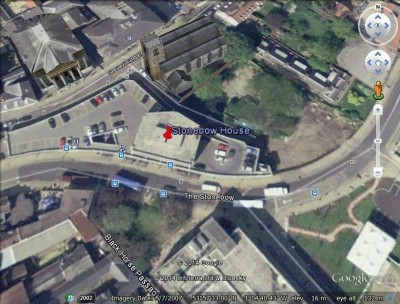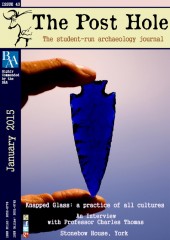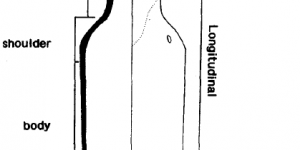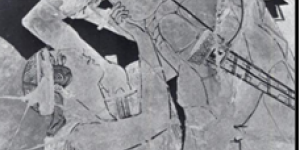The history of Stonebow House has been filled with ups and downs. On the one hand, the aesthetics of the building seem to have displeased many architects and tourists alike, whilst those who work in the building, or who grew up in the area, perceive it as a focal point for local stories and as a physical, recognisable landmark. There are businesses currently operating in the building, such as the popular night clubs Fibbers and The Duchess, which host several live music events every week. Furthermore, it houses York’s Job Centre, considered to be a vital line of support for those in need of work. Importantly, we must not forget that this building is a legacy of the 60s, a decade which may have heralded some of the worst concrete eyesores of the last century, but it is still a period of history that needs to be remembered (Wright 2014).
This paper aims to enumerate all the reasons why Stonebow House, due to the tangible and intangible heritage value of the building, should be listed before it ends up in the catalogue of buildings to be demolished, purely due to its controversial appearance. The paper will be divided into the following sections which are drawn from the principles for the selection of listed buildings: historical and descriptive information, evaluation of significance constituting the main part, and risks which may be faced if the building is not listed (DCMS 2010). It will then conclude with a short statement of significance.
Description and History
Stonebow House, The Stonebow, York (Fig. 1), was designed by Wells, Hickman and Partners and completed in 1965. It is a good example of 1960’s architecture, with offices placed above a concrete platform semi-detached from the lower part of the building (Fig. 2). It also hosts a car park on the lower roof. The designers made the strategic choice to connect the pedestrian walkways to the streets around the building, creating a double walkway effect that makes the building look like there are two different parallel paths instead of just a typical single terrace at the top. This makes it barely perceptible that the pedestrian is actually changing altitude.
The quality of the concrete which was used to build Stonebow House is excellent, according to architect J. Wright. “Just like stone, concrete comes in many forms and qualities and that used at Stonebow is both well considered and expensive with a sandy aggregate stone finish used throughout” (Wright 2014), highlighting that the building is in good structural condition.
Evaluation of Significance
Identifying and recording the Historic Environment
As people will popularly agree, York is a deeply historical town, with vast archaeological collections from numerous periods; Prehistoric, Roman, Anglo-Saxon, Viking, Norman, Medieval, Tudor/Stuart, Georgian and Victorian. Evidence of which can be seen both above and below the ground all over the city (York Museum Trust 2014). Looking at this long list of historical periods, one question comes to mind: why do the 60s not feature? Do not recent periods still count as history? After all, the Department for Culture Media and Sport’s (DCMS) general principles for listing criteria, declares that over 30 years constitutes a reasonable claim for a building to be classified as a historical building (DCMS 2010). Regardless of time periods, the Faro Convention clearly explains that heritage is the interaction of people with the building itself, demonstrating it is not just historical value that is of importance, but the intrinsic cultural value associated to a building through years of contact (Council of Europe 2009).
There is a very diverse landscape in England allowing the inclusion of many types of structures in the index of possible listed buildings (DCMS 2010). Therefore, the fact that this particular building is a 60s office block does not mean that it cannot be considered a historical structure in need of listed recognition. The fact that the building is not very attractive, or even “hideous” as described in The Press, to such an extent that it became a symbol of horrible constructions of the 60s and a representation of the “modern” building in an ancient town (Stead 2014). This only serves to make the building more worth preserving. It has attracted more interest and public attention than many older buildings around the ancient town, which arguably go unnoticed by the general public.
Listing Buildings of Special Architectural and Historic Interest
In order to be listed by the Secretary of State, the building in question has to have some outstanding architectural or historical interest that will enable the building to enter into one of three grades: Grade I, Grade II* or Grade II (DCMS 2010). I believe that both of these criteria are fully present in the building, and if we put aside the stigma of the building referred to as the ugliest building in York, we may see the preservation of an age where most buildings were ”hideous” in looks and construction. The 60s were a time where concrete was taking precedence over any other material, where tacky furniture and brightly coloured adornments were replacing ancient, beautiful objects, often thrown away to make place for these new adorments. Meanwhile brutalist architecture was taking over, university towns especially were embracing concrete as the new fashion (Meades 2014). Regardless of being horrible in appearance and considered, even by the experts, as an eye sore, buildings like Stonebow House were considered the architectural style of an era and many have been listed. Therefore, the building in question has a very strong architectural value despite the views of the building being negative, it is still of archaeological interest.
The view that Stonebow House should be demolished comes mostly from people that do not live and work within its walls, people who have no emotional connection to the building. For them it is an ugly building that disrupts the view of a beautiful town, although they have little idea of what would replace the building, should it be demolished. But, who decided that only beautiful buildings should be preserved and the ugly ones should not? These decisions should not be made without speaking to locals and understanding emotional attachments to the building itself. One interesting quote comes from a meeting held during 2014, in regards to the removal of Stonebow House:
“You could be right. I have hated it but I’ve grown up with it. Fond memories of Fibbers beneath. It would be like losing your three legged pet
Ha ha!… Let’s keep it and let our children make the decision if it’s awful
(from York Past and Present debate, 10th July)” (Wright 2014).
This is a clear example of passing heritage on: the father wants to leave the fate of the building to his children, who in time will feel an emotional connection to the building as he does. Who would disagree with the passage of knowledge and heritage to a future generation? How can English Heritage, based around the archaeological mission to preserve history for future generations, go against its own principles? English Heritage should be the one of the first organisations moving to preserve such a building, as Stonebow House is under threat of being demolished both by the regional government, supported by large numbers of the public (Stead 2014). If English Heritage has set a rule that buildings with significant historical importance need to be preserved and saved from the immediate threat of such a thing happening (English Heritage 2014), they should themselves bring forward a petition to stop the debate which may ultimately end in the demolition of Stonebow House (Wright 2014).
Statutory criteria
The criteria for deciding to list a building in statute are very clear on the two basic interest areas of architecture and history.
“To be of special architectural interest a building must be of importance in its architectural design, decoration or craftsmanship; special interest may also apply to nationally important examples of particular building types and techniques” (DCMS 2010).
As previously mentioned, Stonebow House represents the brutalist architectural movement of the 60s, and as much as Victorian, Roman or Greek architecture, it needs to be preserved. This would safeguard an example of an architectural style that, due to its perceived ugliness, is vanishing all over the world. It is arguably comparable to dismissing a Picasso painting because the general public find it unsightly. It may be ugly, but it is a rare example of a dead style, that is gradually getting lost in time.
The second area of interest is defined as follows:
“To be of special historic interest a building must illustrate important aspects of the nation’s social, economic, cultural, or military history and/or have close historical associations with nationally important people. There should normally be some quality of interest in the physical fabric of the building itself to justify the statutory protection afforded by listing” (DCMS 2010).
Stonebow House represents 60s architecture, it represents the economic state of the country during that decade and it represents the culture of York’s population in the 60s, in spite of modern perceptions of ugliness.
General Principles
Lastly we must analyse the general principles of having the building considered for a listing criteria:
-
Age and rarity: Stonebow House was built in the mid-1960s by Wells, Hickman and Partners (Stead 2014); it is more than 40 years old. As buildings must be older than 30 years before being considered for listing, Stonebow House passes this first hurdle. Furthermore, it is the only building of its kind in the centre of the city, excluding the University of York buildings which, until recently, were not even in the same county jurisdiction, hence Stonebow House is unique in the area.
-
Aesthetic merits: one may think that because of its unappealing exterior the building may have failed to meet this specification, but the guidelines state: a “special interest of a building will not always be reflected in obvious external visual quality. Buildings that are important for reasons of technological innovation, or as illustrating particular aspects of social or economic history, may have little external visual quality” (DCMS 2010) meaning the building falls perfectly within this category. Stonebow House represents the socio-economic history of the 60s and beauty is not a requirement.
-
Selectivity: the criteria is very flexible, but in essence the building must be of a rare kind or in a particular style of diminishing numbers. Based on the fact that no other building in the area looks similar to the Stonebow House, it should meet this specification. Due to the tendency all over the world to demolish 60s buildings because of their ugliness, there are a limited number of these “brutal” buildings left (Meades 2014).
-
National interest: the building needs to be unique in the region, but when put together with other buildings of the same type from around the nation, it must create a distinct national stock representing a particular time and style, whilst clearly making a major contribution. From the literature regarding Stonebow House, it can be seen that most people who visit York or live in the region consider it a unique eyesore (York Stories 2013). Its difference from all other buildings in the area, arguably makes it a major contribution to the architectural eyesores of the UK.
-
For the criteria regarding the state of repair, the architectural expert Wright described it as one of the few post war buildings that is still in a good state of repair and therefore worth saving. This gives Stonebow House a priority over buildings that are similar but with structural problems (Wright 2014).
Risks for the future
If Stonebow House was to be demolished or replaced, there would be an open conflict between generations of people living in the town, classes and business owners as described by Thomas (2011) in his paper dealing with cultural conflicts over the enjoyment of national parks in Australia. The elite are the aesthetically driven population (Thomas 2011, the Australians), in this case represented by the council and population that only value the beauty of a place, will come into open cultural conflict with the culturally entangled population (Thomas 2011, the Macedonians), including shop owners, the clubbers or job seekers.
To elaborate on this concept, there is a popular night club, Fibbers, in the lower level of the Stonebow building (Fibbers 2014). The younger generation which visit the club regularly will begrudge the clubs removal subsequently, blaming whoever made the decision to demolish the building and in turn their cultural heritage, represented by memories in and around the old building. There would be an outcry from historians and heritage enthusiasts who may be at odds with the argument that an ugly building needs to be demolished. A good example is the response that Wright’s articles receive from people with conflicting views (Wright 2014). Business owners which currently inhabit the building will have no comparable relocation site. Meaning, Fibbers, the Job Centre, and The Duchess which hosts regular live concerts (Duchess 2014) will lose their premises, which that several generations have made part of their everyday lives.
Conclusion
The building itself has become an integral part of the heritage of York, architecturally, socially and historically for the reasons mentioned above. I would ask is that these different opinions, along with the evidence, are justly considered before destroying a building that, despite being ugly and unappreciated by many, is a part of history from the 60s that will not come back once removed. The repercussions of such an act will have a devastating effect on a town famous for the preservation of historical sites and appreciation of heritage throughout the ages.
Statement of Significance
The listing of Stonebow House would be an addition from the 60s meaning that all time periods would be well represented in this York. This building in particular represents the 60s movement in architecture and is a testament to the culture of the time. The establishments inside Stonebow House symbolise the new era which began during the 60s encompassing modern buildings, rock music and new jobs. Aptly all are still represented in Stonebow House today.
Bibliography
- Council of Europe. (2009). Heritage and Beyond. Strasbourg: Council of Europe. Available at: http://www.coe.int/t/dg4/cultureheritage/heritage/identities/PatrimoineB.... Accessed on: 15/10/14.
- DCMS. (2010). Principles of selection for listing buildings. GOV.UK. Available at: https://www.gov.uk/government/uploads/system/uploads/attachment_data/fil.... Accessed on: 14/10/14.
- The Duchess. (2014). Duchess. Available at: http://theduchessyork.co.uk/. Accessed on: 17/10/14.
- English Heritage. (2014). Listing and designation application form. English Heritage. Available at: http://www.english-heritage.org.uk/professional/protection/process/onlin.... Accessed on: 17/10/14.
- Fibbers. (2014). Fibbers. Available at: http://www.fibbers.co.uk/. Accessed on: 17/10/14.
- Meades, J. (2014). The incredible hulks: Jonathan Meades' A-Z of brutalism. The Guardian. Available at: http://www.theguardian.com/artanddesign/2014/feb/13/jonathan-meades-brut.... Accessed on: 14/10/14.
- Stead, M. (2014). City of York Council to debate future of Stonebow House plot. The Press. Available at: http://www.yorkpress.co.uk/news/10918497.Stonebow_House__may_be_demolish.... Accessed on: 15/10/14.
- Thomas, M. (2001). A Multicultural landscape: National Parks & the Macedonian Experience. Hurstville: NSW National Parks and Wildlife Service and Pluto Press (Australia).
- Wright, J. (2014). Stonebow House: Not exactly ‘YES’ or ‘NO’…at our last event there was a lot of grey. York: Living with History. Available at: http://livingwithhistory.wordpress.com/category/stonebow/page/2/. Accessed on: 13/10/14.
- Wright, J. (2014). Stonebow House reminds us that York lived through the 20th century. Infinite Mix York. Available at: http://www.yorkmix.com/life/environment-life/stonebow-house-reminds-us-t.... Accessed on: 17/10/14.
- York Museum Trust. (2014). History of York. Available at: http://www.historyofyork.org.uk/home. Accessed on: 14/10/14.
- York Stories. (2013). The ‘Stonebow is a listed building’ myth. York Stories. Available at: http://yorkstories.co.uk/the-stonebow-is-a-listed-building-myth/. Accessed on: 17/10/14.










